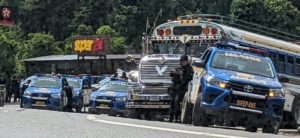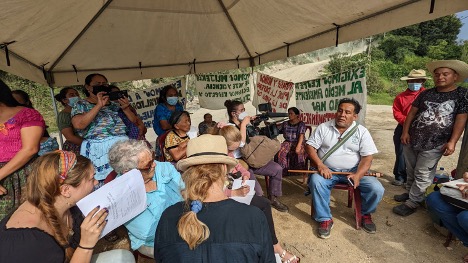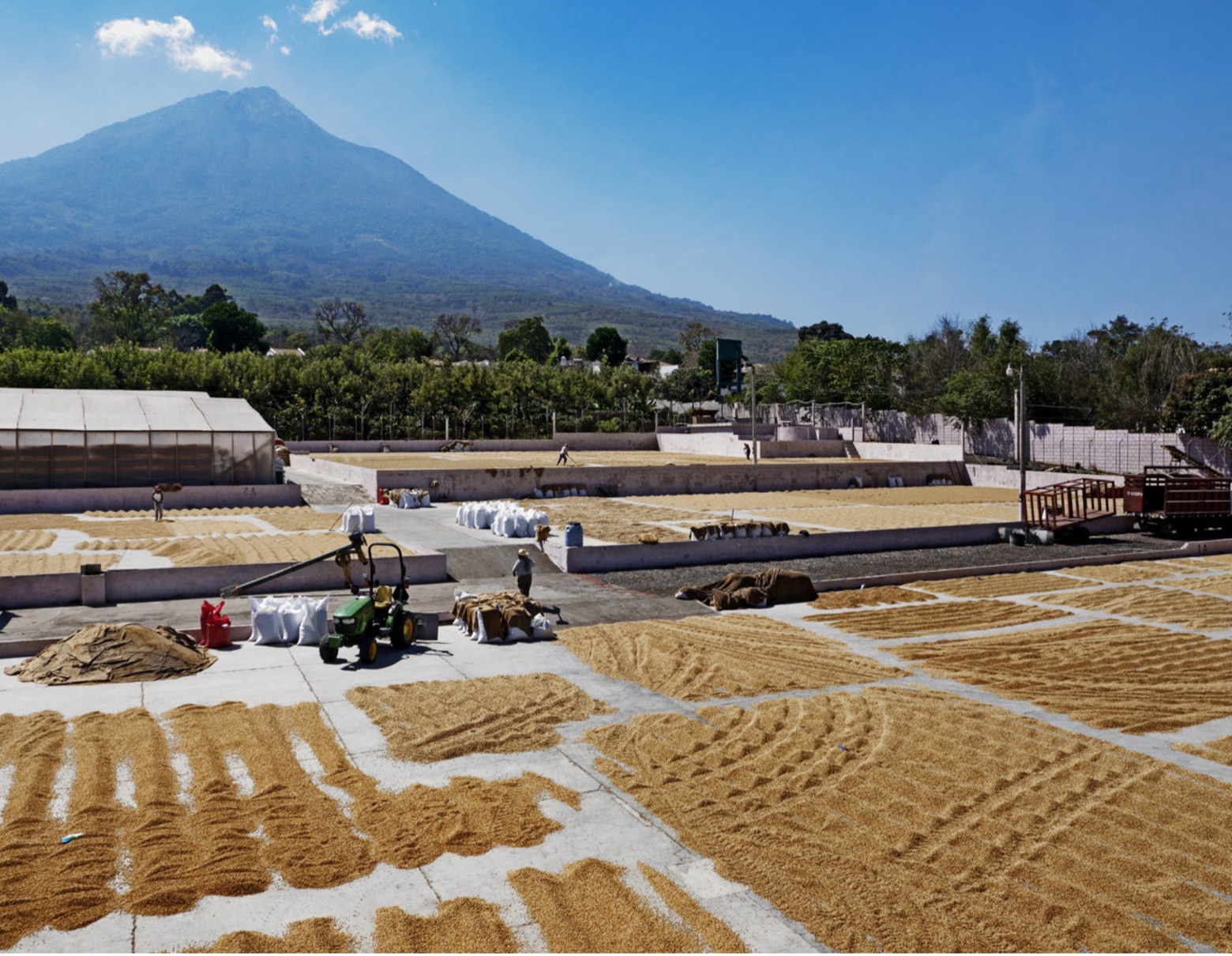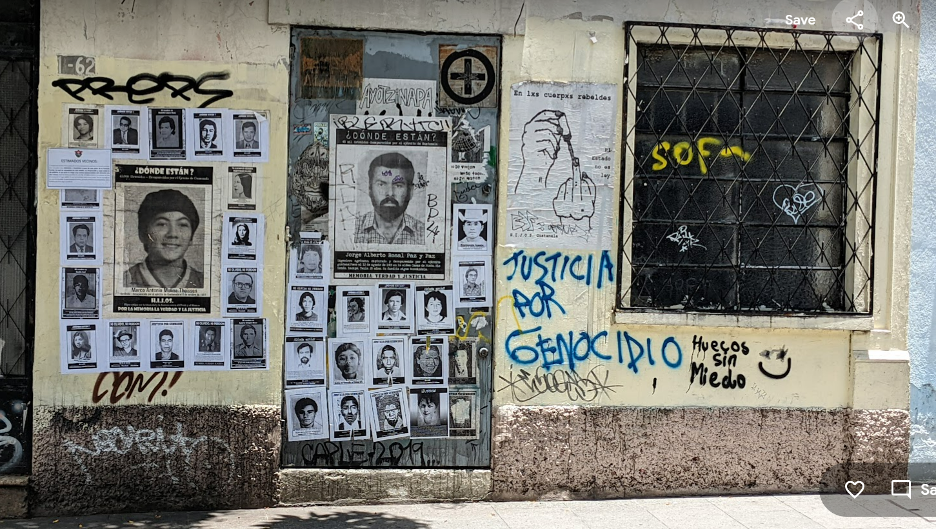
Guatemalan police units assist with a land eviction
If you want to see what ethnic cleansing looks like in the 21st century, take a trip to Guatemala. Don’t just stay at the charming eco-lodge by the lake under the volcanoes, however, because you might fly home with a false idea of Guatemalan progress. To understand the true cost of your vacation you have to see the original residents the police drove off the land so investors could acquire that scenic view; the nearby farms appropriated by agro-industries responding to foreign, not local, markets; and the courtroom where Indigenous political leaders are rendered invisible in disputes with multinational investors. Those helpful waiters you are tipping? They might have been driven out of their ancestral villages at night by hired thugs from the nearby mine pumping toxic runoff into their water, their family scattered to places as distant as Champaign-Urbana, Illinois in the effort to find the money to keep the next generation alive. This ethnic cleansing is not grotesquely bloody in the way that usually captures international attention, but the results are just the same: a landscape cleared of the culture, institutions, and bodies inconvenient for the more powerful.
This July I had the chance to get a closer look at the ground-level casualties of this ethnic-cleansing machine whitewashed as “development” while on an emergency delegation organized by the Guatemala Human Rights Commission (GHRC). We traveled with Guatemala- and Washington, DC-based staff of the GHRC, and spoke with lawyers, journalists, Indigenous leaders, and victims of land eviction and violent intimidation. The delegation report and accompanying short documentary illustrate the brazen cooptation of the judicial system that is turning Guatemala into an industrial park for someone else’s “progress.”

The delegation meeting with a community confronting both unregulated city sewage and mining that has led to school, road, and housing collapse
From the Dirty War to Dirty Courtrooms
In the 1980s the preferred technique for ethnic cleansing in Guatemala was burning villages and disappearing the inhabitants. These were the final and most brutal years of the internal armed conflict that simmered from 1954, when a US-sponsored coup deposed a reformist president (Jacobo Arbenz), until the peace accords of 1996. The US-funded and -trained Guatemalan military was responsible for almost all of the 250,000 dead, 45,000 missing, and one million displaced during the war years—more than 80 percent of whom were Indigenous. With the signing of the 1996 accords many hoped the long nightmare was over.
Unfortunately, it’s just as nightmarish today. The plutocrats have regained control of the state while the soldiers who terrorized Indigenous villages during the war years have returned wearing the uniforms of company guards or national police. Our delegation was repeatedly told, “It feels like the 1980s again.”
CAFTA and the Globalization of Corruption
There were successful prosecutions for war crimes and corruption in the first years after the peace accords; one high point came in 2015, when the sitting president, Jimmy Morales, was indicted. That was certainly cause for celebration, but the slew of charges involving bribery, kickbacks from foreign corporations, tax manipulation, and money laundering was also cause for concern. These were not old-school, Guatemalan-elite, all-in-the-family corruption schemes, but planet-spanning deals that reflected the newly globalized, post-2006 Central American Free Trade Agreement (CAFTA) economy of Guatemala.

Since CAFTA was signed in 2006, the boom in large-scale export agriculture has resulted in widespread land evictions and increased malnutrition. In 2022, 49 percent of Guatemalan children suffer from chronic malnutrition
Since CAFTA was signed in 2006 the boom in large scale export agriculture has resulted in widespread land evictions and increased malnutrition. In 2022 49 percent of Guatemalan children suffered from chronic malnutrition
Mining, agribusiness, and tourism ventures flocked to Guatemala after CAFTA, but this migration also inaugurated disputes over environmental impact, land titles, and community consultations. Investors faced with indictments often resorted to the corporate shell game of restructuring to avoid legal consequences, but bribery was another option. One informant emphasized that “money for corruption does not fall from the sky.” Moreover, growing annoyance with the legal system was also felt among ex-military personnel worried about cases dating from the war years and local elites hoping to profit from new business partnerships. The convergence of interests would prove lethal for rights.
The assault on the legal system has turned brazen in the past few years. The UN-mandated International Commission against Impunity (CICIG) thrown out of the country by the president in 2019 after it uncovered crimes linking state actors with profits from the dirty war. The head of the Special Prosecutor’s Office on Fiscal Corruption (FECI) forced to flee the country in July, 2021 after investigating presidential finances. Journalists have been subject to electronic surveillance, doxxing, and even fatal violence. They, along with judges and lawyers who have remained independent, are “criminalized,” or arrested on trumped-up charges and placed in pretrial detention, sometimes in the same cell blocks with those they helped to convict. By contrast, some facing charges for genocide have been given house arrest. In the past year more than 15 judges and several journalists have been forced to choose exile to survive.
Indigenous leaders protecting communities against mining waste or land dispossession also risk costly criminalization. We met with 14 families who had been living in hiding since April after having been threatened with death and burned out of their homes in the middle of the night so that a luxury resort could be constructed on their land. Now they do not even dare to register a newborn with the state office, because they, not the armed men who burned their homes, face arrest if they are located.
The takeover of the legal machinery of Guatemala, which extends to the takeover of the law schools, the Attorney General’s Office, and the Supreme Court, has turned the law into a weapon of persecution, not protection. Criminalization is the one-size-fits-all tool for silencing the voices of rights defenders from Indigenous farmers to federal judges.
Ghosts of the Military Machine
The Indigenous lands of Guatemala were the focus of state violence during the war years and are again the principal battlegrounds in the struggle between corporate and community land use. Not only do Indigenous communities face disdain for their heritage and claims, but of both private landowners’ and companies’ security personnel often include ex-military members, some even responsible for local crimes in years past. The deterioration of legal accountability, such as when the genocide conviction against former President Efrain Rios Montt was overturned on a technicality by the Supreme Court, has only emboldened these forces.

Photos of the missing and murdered accompany pleas for information. The graffiti reads “Justice for the Genocide”
This climate of violence draws additional power from the traumatic memories of the war years. Forensic exhumations of mass gravesites are ongoing across the country. Photos of genocide victims are plastered around capital streets. Other posters contain appeals from those kidnapped as children who are still searching for their families. Jesús Tecú, who now runs a legal clinic, described to us how when the army massacred his village soldiers were allowed to choose one child to send home as a laborer. Jesus worked for years for the man he watched murder his two-year-old brother. For men like Jesus, this is not a struggle over community rights taking place in the aftermath of a genocidal war; this is a new chapter in a war that has been waged on communities since the Europeans arrived in the 1500s.

1,591 total views, 1 views today
